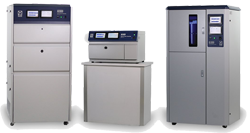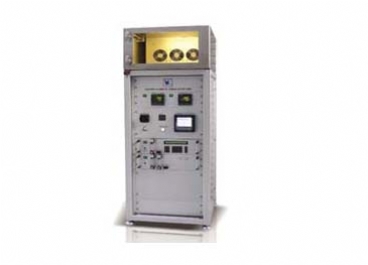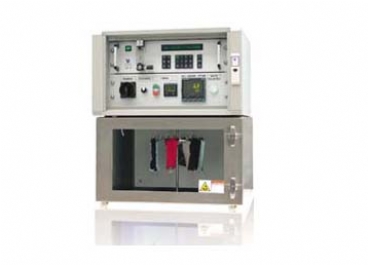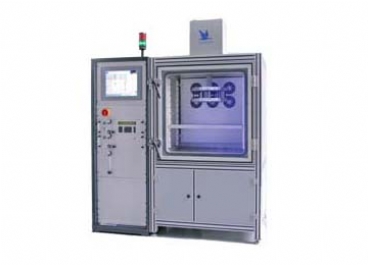耐候性試驗
Weathering Testing
咨詢熱線
18566398802ASTM D2000-06
ASTM D2000-06標準介紹
ASTM D2000-06標準簡介
ASTM D2000-06標準是關(guān)于汽車用橡膠制品的分類標準,標準后面連續(xù)的數(shù)字指代是的標準被采用的年份或修訂情況下,最新修改被采用的年份,目前ASTM D2000-06標準已經(jīng)被棄用,現(xiàn)行標準版本為ASTM D2000 - 12(2017)。
1. Scope
1.1 This classification system covers the properties of vulcanized rubber materials (natural rubber, reclaimed rubber, synthetic rubbers, alone or in combination) that are intended for, but not limited to, use in rubber products for automotive applications.
NOTE 1—This classification system may serve many of the needs of other industries in much the same manner as SAE numbered steels. It must be remembered, however, that this system is subject to revision when required by automotive needs. It is recommended that the latest revision always be used.
1.2 This classification system is based on the premise that the properties of all rubber products can be arranged into characteristic material designations. These designations are determined by types, based on resistance to heat aging, and classes, based on resistance to swelling in oil. Basic levels are thus established which, together with values describing additional requirements, permit complete description of the quality of all elastomeric materials.
1.3 In all cases where the provisions of this classification system would conflict with those of the detailed specifications for a particular product, the latter shall take precedence.
NOTE 2—When the rubber product is to be used for purposes where the requirements are too specific to be completely prescribed by this classification system, it is necessary for the purchaser to consult the supplier in advance, to establish the appropriate properties, test methods, and specification test limits.
1.4 The values stated in SI units are to be regarded as standard.
2. Referenced Documents
2.1 ASTM Standards: 2
D 395 Test Methods for Rubber Property—Compression Set
D 412 Test Methods for Vulcanized Rubber and Thermoplastic Elastomers—Tension
D 429 Test Methods for Rubber Property—Adhesion to Rigid Substrates
D 430 Test Methods for Rubber Deterioration—Dynamic Fatigue
D 471 Test Method for Rubber Property—Effect of Liquids
D 573 Test Method for Rubber—Deterioration in an Air Oven
D 575 Test Methods for Rubber Properties in Compression
D 624 Test Method for Tear Strength of Conventional Vulcanized Rubber and Thermoplastic Elastomers
D 865 Test Method for Rubber—Deterioration by Heating in Air (Test Tube Enclosure)
D 925 Test Methods for Rubber Property—Staining of Surfaces (Contact, Migration, and Diffusion)
D 945 Test Methods for Rubber Properties in Compression or Shear (Mechanical Oscillograph)
D 1053 Test Methods for Rubber Property—Stiffening at Low Temperatures: Flexible Polymers and Coated Fabrics
D 1171 Test Method for Rubber Deterioration—Surface Ozone Cracking Outdoors or Chamber (Triangular Specimens)
D 1329 Test Method for Evaluating Rubber Property— Retraction at Lower Temperatures (TR Test)
D 1349 Practice for Rubber—Standard Temperatures for Testing
D 1418 Practice for Rubber and Rubber Latices Nomenclature
D 2137 Test Methods for Rubber Property—Brittleness Point of Flexible Polymers and Coated Fabrics
D 2240 Test Method for Rubber Property—Durometer Hardness
D 3183 Practice for Rubber—Preparation of Pieces for Test Purposes from Products
D 5964 Practice for Rubber IRM 902 and IRM 903 Replacement Oils for ASTM No. 2 and ASTM No. 3 Oils
3. Purpose
3.1 The purpose of this classification system is to provide guidance to the engineer in the selection of practical, commercially available rubber materials, and further to provide a method for specifying these materials by the use of a simple “l(fā)ine call-out” designation.
3.2 This classification system was developed to permit the addition of descriptive values for future rubber materials without complete reorganization of the classification system and to facilitate the incorporation of future new test methods to keep pace with changing industry requirements.
溫馨提醒:本ASTM D2000-06可能存在更新的版本,建議尋找ASTM D2000-06的發(fā)行商確認。


 臭氧老化箱
臭氧老化箱

 粵公網(wǎng)安備 44060402000067號
粵公網(wǎng)安備 44060402000067號